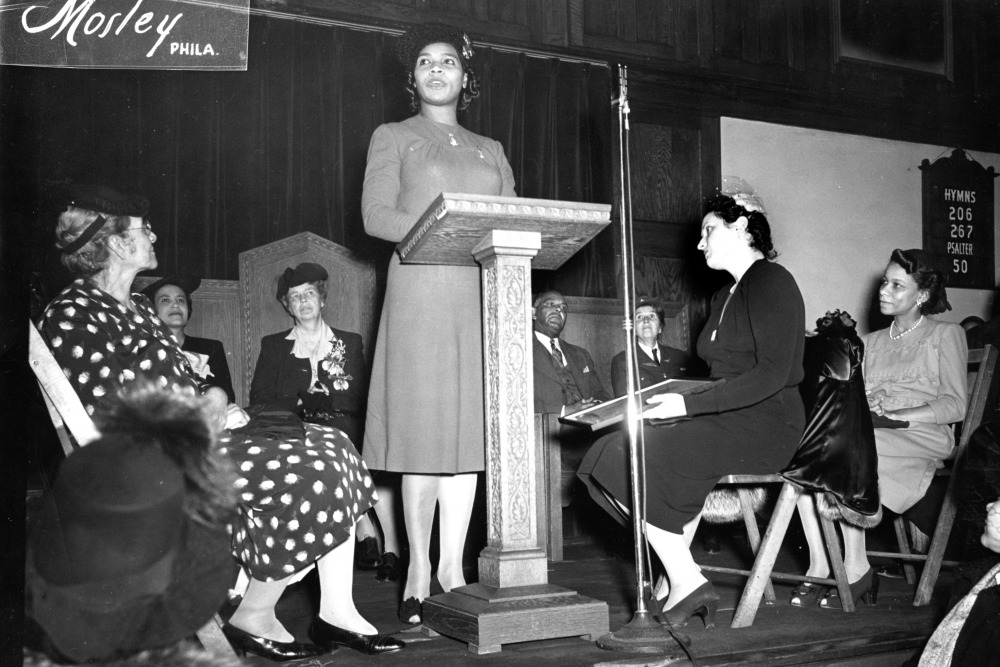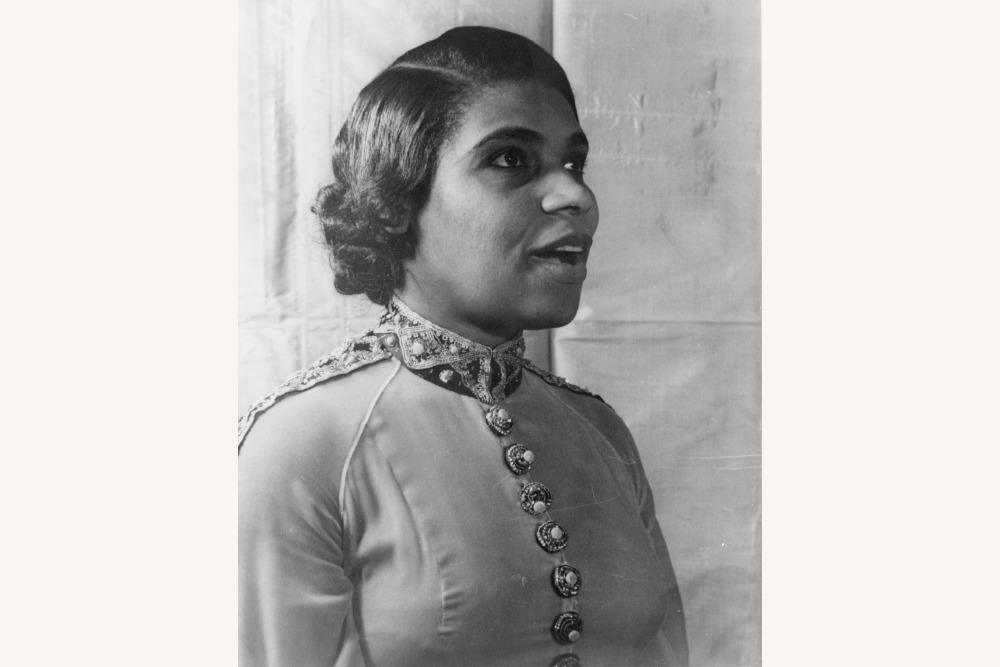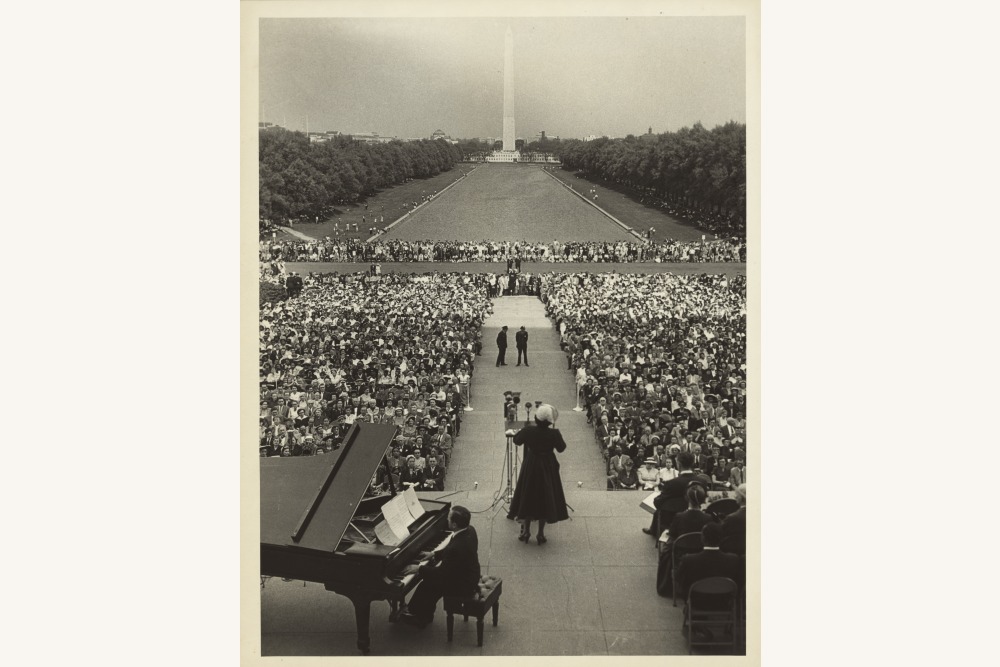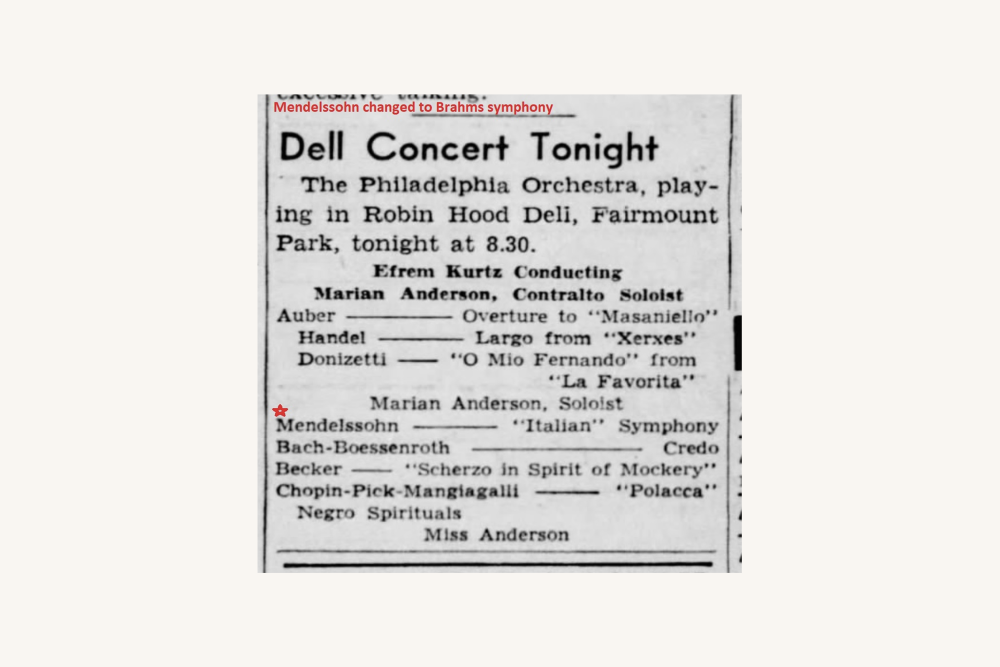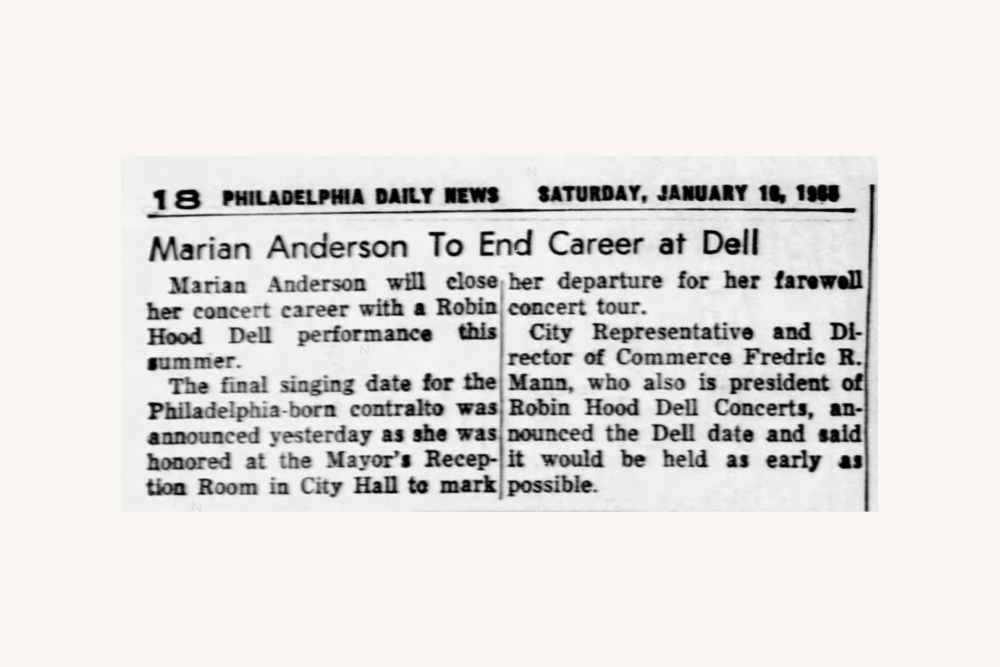From the Vault: Marian Anderson at Robin Hood Dell (1940)
MANN MUSIC ROOM: VAULT
Blog Entry by Jack McCarthy, Historian, The Mann Center for the Performing Arts
The Mann Center traces its history to the Robin Hood Dell, which opened in 1930 in East Fairmount Park as a summer home for The Philadelphia Orchestra. In 1976 the organization moved to a new venue in West Fairmount Park. Originally called Robin Hood Dell West, it was later renamed the Mann Music Center in honor of its longtime director and benefactor Frederic Mann, and subsequently renamed the Mann Center for the Performing Arts.
Born and raised less than five miles from the Robin Hood Dell, contralto Marian Anderson, one of the greatest singers of the twentieth century, was a frequent performer at the Dell over the years. Her first appearance was July 18, 1940. She was then forty-three years old and a world-renowned concert artist whose career had taken on a new dimension with her iconic performance at the Lincoln Memorial in Washington DC a year earlier. The story behind that event is well-known: denied the opportunity to perform at the Daughters of the American Revolution’s prestigious Constitution Hall in Washington because she was African American, a group of activists, including First Lady Eleanor Roosevelt, arranged for Anderson to give an outdoor concert at the Lincoln Memorial. The April 9, 1939 Easter Sunday concert, which drew an integrated audience of 75,000 and was broadcast nationally on radio, became a signal event in the Civil Rights movement.
When Marian Anderson appeared at Robin Hood Dell for the first time the following year, she was a hometown hero. The Philadelphia Inquirer reported that the concert set a Dell record at the time of over 12,000 attendees and that several thousand were turned away. The paper also noted the unusual circumstances of Anderson’s arrival at the venue, along with the crowd’s enthusiasm: “There was something of a mob scene when the soloist’s chauffeur became confused and Miss Anderson appeared at the general admission entrance. Alert park guards rescued her from enthusiastic fans and souvenir hunters and directed the chauffeur to the soloist’s private entrance at the rear of the orchestra shell. Inside the Dell the crush was almost as bad, and there were several cases of fainting.” Describing the concert itself, the reviewer noted that “Miss Anderson was at her magnificent best… The great Negro contralto thrilled her listeners with her rich, round-toned voice, and the sonority of her unequaled lower tones.”
Marian Anderson subsequently appeared at the Dell six more times over the next twenty-seven years. Her last singing appearance was June 28, 1965 as part of her international farewell tour prior to retirement. The concert was conducted by her nephew James DePriest, also a Philadelphia native, who had studied at the Philadelphia Conservatory and the University of Pennsylvania, and who was making his debut at the Dell that night. The concert set yet another Dell record of 35,000 attendees (the venue had been renovated and expanded considerably since Anderson’s 1940 appearance). The farewell program included Italian arias, German lieder, Negro spirituals—for which she was renowned—and concluded with the perennial favorite, Franz Schubert’s “Ave Maria.” Marian Anderson returned to the Dell one last time, two years later on July 3, 1967, in a non-singing role, narrating Aaron Copland’s “Lincoln Portrait,” with Arthur Fielder conducting the Robin Hood Dell Orchestra. It was her last appearance in Philadelphia.

